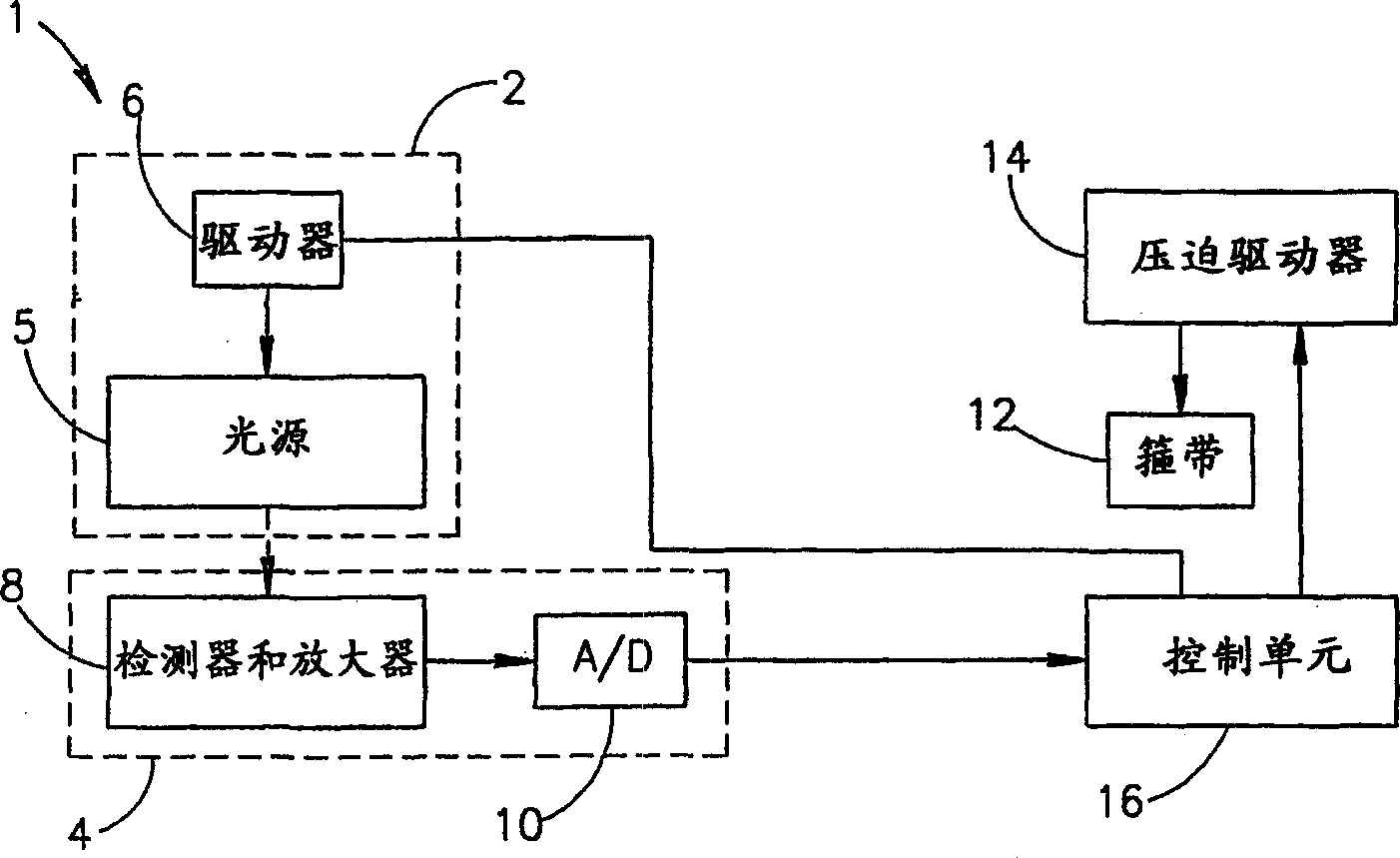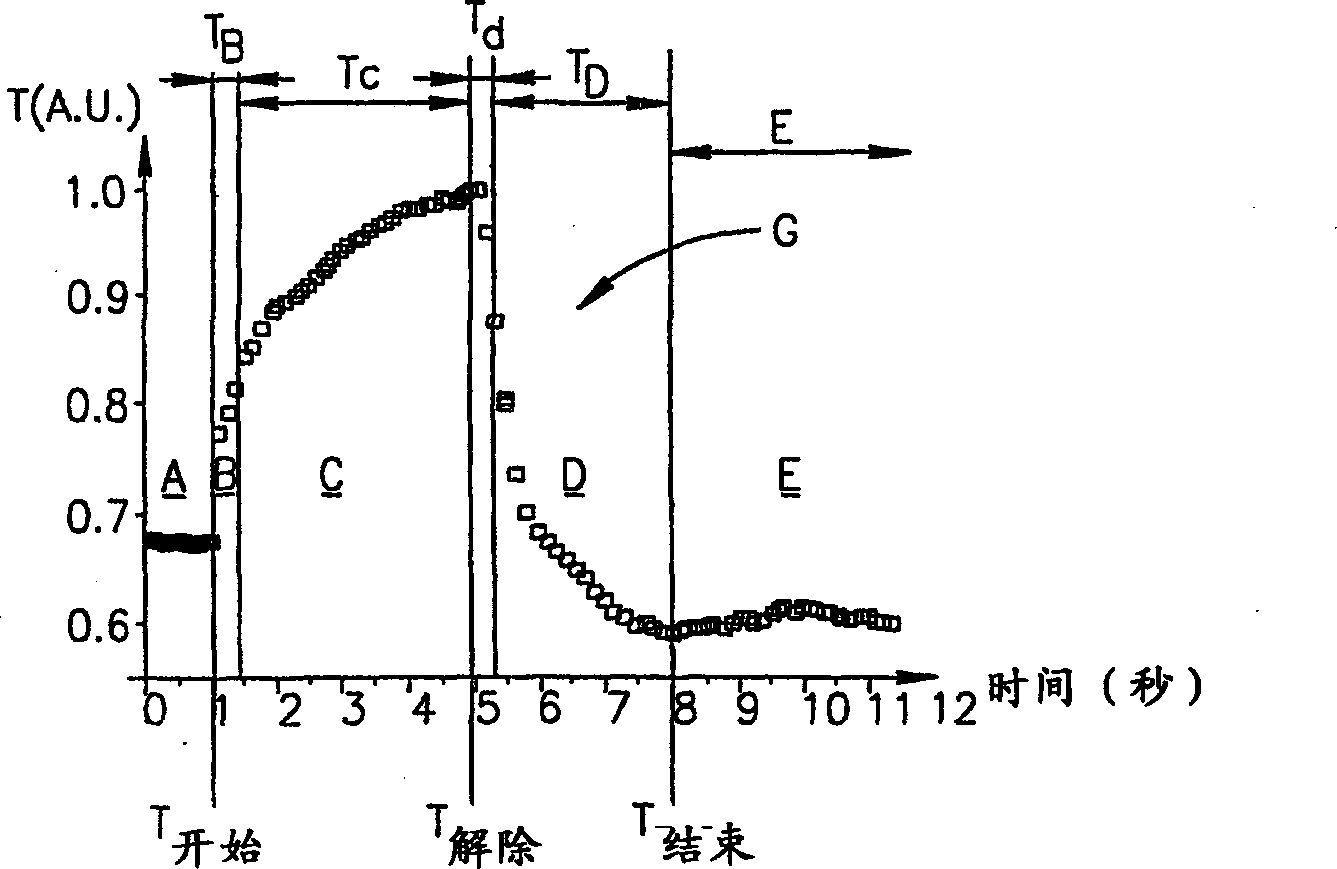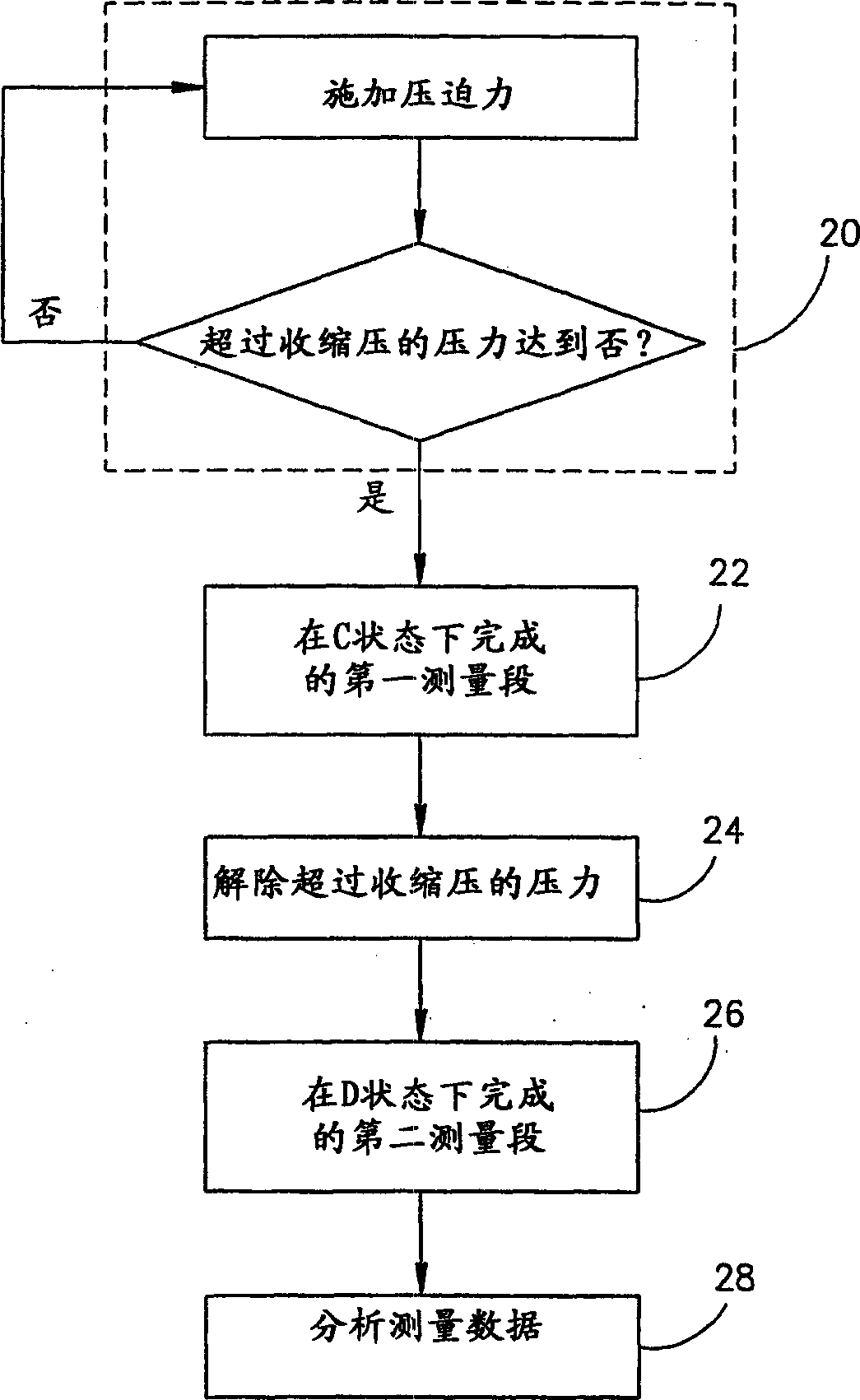Non-invasive optical measurement of blood constituent
An optical measurement, blood technology, applied in blood characterization devices, diagnostic recording/measurement, medical science, etc., can solve problems such as indistinguishability, and achieve the effect of high signal-to-noise ratio
- Summary
- Abstract
- Description
- Claims
- Application Information
AI Technical Summary
Problems solved by technology
Method used
Image
Examples
example 1
[0085] measured during real transmission at two wavelengths for L 1 =760nm and L 2 =940nm for about 85 seconds. For this purpose, commonly used LEDs with radiation picks at 940 nm and 760 nm are used.
[0086] The entire measurement process consists of a single four-second standard pulse measurement interval and seven consecutive OR time periods. The logarithm of transmission can be obtained as a function of time. The transmission logarithm is shown in the Figure 4A , the figure shows the corresponding wavelength L respectively 1 and L 2 The two curves P 1 and P 2 .
[0087] Such as Figure 4B As shown, in the next stage, the wavelength L 2 The transmission logarithm [that is, Log(L 2 )] with a wavelength of L 1 The transmission logarithm [that is, Log(L 1 )] parameter slope PS. In other words, the curve PS is Log(L 2 ) to Log(L 1 ) linear function. In order to determine this linear function, the known linear regression operation can be used, for example.
...
example 2
[0099]All human blood is pumped into clear glass tubes with rigid glass walls using a peristaltic pump. Immediately after the blood flow phase, the effect of light transmission at different wavelengths starts to vary. Figure 5A are shown respectively corresponding to the wavelength L 1 =660nm, L 2 =950nm and L 3 =Three curves H at 1300nm 1 ,H 2 and H 3 . After blood flow resumes, the transmission value returns to its initial level.
[0100] It should be noted that if the walls of the glass tube are flexible, which in fact presents a volume-changing mode, the transmission level will gradually decrease at all wavelengths mentioned above. However, avoiding volume changes can lead to very exotic transmission properties, where the light transmission curve changes variously over time at different wavelengths.
example 3
[0102] To stop blood flow, pressure in excess of systolic blood pressure is applied to the patient's upper extremity. Observe the transport performance model similar to the previously described in vitro experiments. Figure 5B are shown respectively corresponding to the wavelength L 1 =660nm, L 2 =950nm and L 3 =1300nm three curves H' 1 ,H' 2 and H' 3 .
[0103] The time constants of transmission variation at different wavelengths have been found to closely resemble these trends. It was also found that the results were independent of the location of the compression, and whether the location of the compression was on the upper part of the fingers, the wrist or the upper extremity.
[0104] Like this, the advantage of the present invention is self-evident. Indeed, all of the above experiments have shown that the application of pressures in excess of the systolic pressure triggers non-volumetric mechanisms within the blood. This mechanism results in continuous and gradua...
PUM
 Login to View More
Login to View More Abstract
Description
Claims
Application Information
 Login to View More
Login to View More - R&D
- Intellectual Property
- Life Sciences
- Materials
- Tech Scout
- Unparalleled Data Quality
- Higher Quality Content
- 60% Fewer Hallucinations
Browse by: Latest US Patents, China's latest patents, Technical Efficacy Thesaurus, Application Domain, Technology Topic, Popular Technical Reports.
© 2025 PatSnap. All rights reserved.Legal|Privacy policy|Modern Slavery Act Transparency Statement|Sitemap|About US| Contact US: help@patsnap.com



